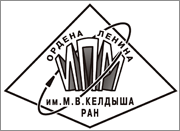|
This article is cited in 1 scientific paper (total in 1 paper)
Trajectories for flight to geostationary orbit using the gravitational field of the Moon
S. V. Belousov, V. V. Ivashkin
Abstract:
Lunar Gravity Assist (LGA) allows us to change a spacecraft (SC) orbit using the Moon’s gravity during its flying by the Moon and reduction of the fuel mass consumption. When the SC orbit initial inclination is more than $\sim30^\circ$, the SC transfer into a geostationary orbit (GSO) using the LGA is more effective from energy point of view than conventional transfer scheme. We study characteristics of the SC trajectories for the launch to GSO using LGA taking into account the gravitational perturbations by Moon, Sun and by the Earth non-sphericity. The method is based on the initial designing the SC trajectory in an approximate model of Lunar point sphere of influence and on the subsequent construction of the trajectory in the exact formulation. The characteristics are given for several families of SC trajectories with a start from various Cosmodromes, for flyby of the Moon in ascending and descending nodes of Lunar orbit as well as for various energy values of the space orbit.
Keywords:
spacecraft, spacecraft trajectory, geostationary orbit, lunar gravity assist.
Citation:
S. V. Belousov, V. V. Ivashkin, “Trajectories for flight to geostationary orbit using the gravitational field of the Moon”, Keldysh Institute preprints, 2017, 041, 36 pp.
Linking options:
https://www.mathnet.ru/eng/ipmp2257 https://www.mathnet.ru/eng/ipmp/y2017/p41
|

|




 Contact us:
Contact us: Terms of Use
Terms of Use
 Registration to the website
Registration to the website Logotypes
Logotypes








 Citation in format
Citation in format 
